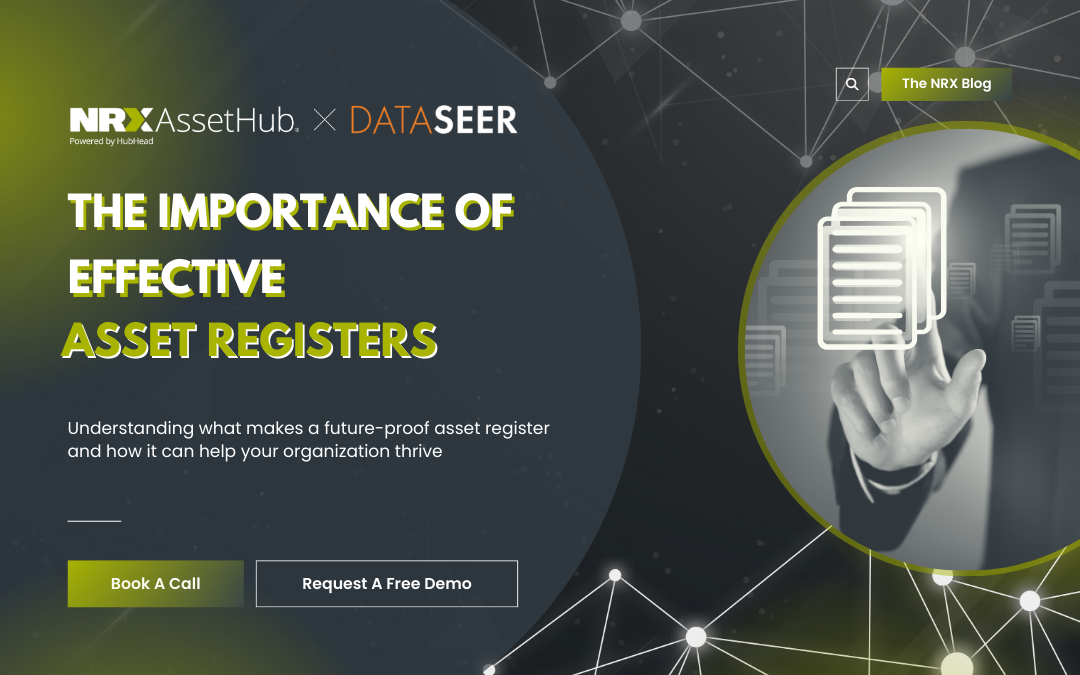What is an Effective Asset Register, and Why Does it Matter?
In today’s competitive business environment, especially for companies in asset-intensive industries such as manufacturing, utilities, or oil and gas, building effective asset registers is crucial. An asset register serves as the foundation for tracking and managing equipment throughout its entire lifecycle. From maintenance to replacements, it consolidates essential information such as equipment tags, maintenance history, and spare parts.
Furthermore, having a clear and accurate asset register is more important than ever in our fast-paced world. It not only keeps operations running smoothly but also reduces downtime and helps businesses make better-informed decisions. As companies evolve, they are moving beyond simple data collection. Now, they are leveraging asset registers to boost predictive maintenance efforts and enhance overall asset reliability.
However, without proper management, outdated or incomplete asset registers can disrupt operations and introduce costly errors. This issue becomes particularly significant in brownfield projects, where existing data often fails to align with technical drawings. Likewise, in greenfield projects, the data provided by contractors might not always be validated against engineering diagrams, which can lead to inconsistencies affecting future operations.

Key Elements of Effective Asset Registers
To ensure long-term success, a reliable asset register must include several critical elements. First and foremost, effective asset registers are more than just a simple list of equipment; it must capture and structure vital details about each asset. Therefore, the following components are essential:
- Asset Hierarchy – First, organize assets based on their relationships, such as the main equipment and its components.
- Equipment Lists – Second, capture detailed data, including tags, specifications, and attributes for each asset.
- Preventive Maintenance Plans – Additionally, link assets to scheduled maintenance activities to help prevent unexpected failures.
- Bills of Materials (BOM) – Lastly, document the spare parts needed for each asset, ensuring quicker repairs and reduced downtime.
By including these key elements, your asset register not only supports daily operations but also enables long-term planning and predictive maintenance. Consequently, this proactive approach helps businesses stay ahead of potential issues and ensure efficient asset management

Challenges of Maintaining an Asset Register in the Digital Age
As businesses increasingly embrace digital transformation, the task of maintaining an accurate and up-to-date asset register becomes more complex. Many companies continue to rely on outdated systems, such as paper documents or scanned PDFs. As a result, transitioning these legacy systems to digital formats can be both time-consuming and prone to errors.
For example, extracting asset data from technical drawings, such as Piping and Instrumentation Diagrams (P&IDs) or process flow diagrams, is often done manually. This process becomes even more challenging when the drawings are inconsistent, contain missing tags, or have other inaccuracies. Over time, these inefficiencies can significantly slow down operations and impact the overall accuracy of the asset register.
Nevertheless, with the rise of AI-powered tools, companies now have the opportunity to automate much of the data extraction process. By digitizing documents and automating data extraction from PDFs or technical diagrams, businesses can reduce manual work by up to 95%. This not only improves the accuracy of the asset data but also enhances the overall reliability of the asset register.

Conclusion- The Importance of Building Effective Asset Registers
In conclusion, an asset register is far more than just a collection of equipment data; it forms the backbone of a company’s maintenance strategy. It plays a critical role in enhancing asset reliability and empowering businesses to make informed decisions. However, the effectiveness of an asset register depends heavily on how well it is built and maintained. This is especially important given the challenges posed by digitization and the integration of legacy systems.
As companies continue to embrace digital transformation, maintaining accurate and complete asset data becomes increasingly crucial. In our next blog, we will explore practical solutions for overcoming these challenges, focusing on how technologies like automated data extraction tools can streamline and future-proof your asset register management for long-term success. Stay tuned!

How Can We Help You?
HubHead and DataSeer’s AI Service combines human-level understanding with machine speed to build a scalable knowledge data store of engineering designs. By integrating these solutions with your existing EAM/CMMS systems and creating a digital twin, you can enhance decision-making and streamline your maintenance processes. Contact us for a free demo or book a call.
The Challenges of Sharing, Storing, and Managing Diagram Images
Embracing Automation – The Future of Data Extraction
Extracting Data from Scanned Images and Paper Drawings
Share this article




